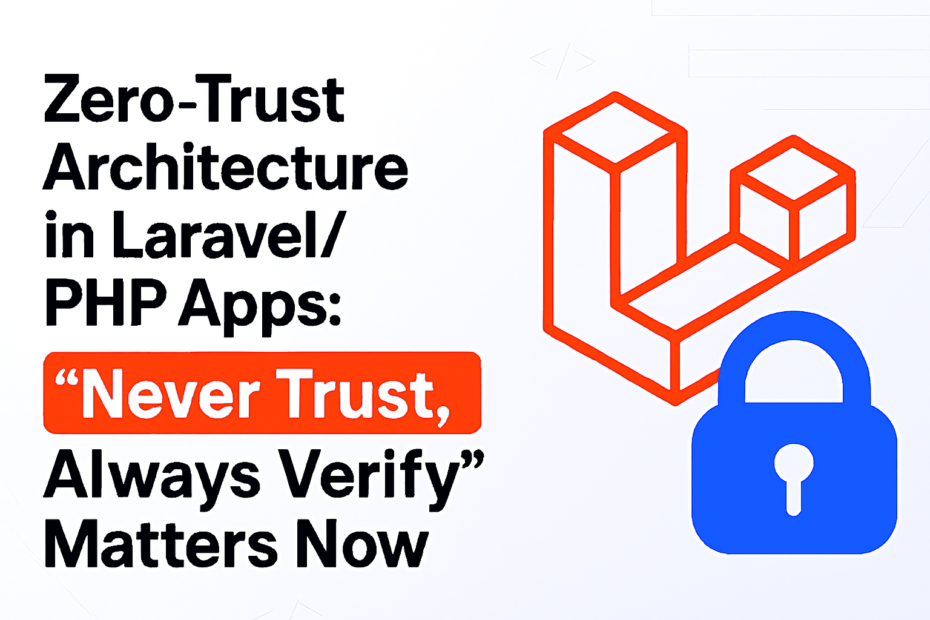Zero-trust security flips the traditional model on its head: no user, device, or request is trusted by default — even inside your app. In Laravel/PHP, this means layered authentication, strict access control, and continuous verification across every route, request, and session.
🧠 What Is Zero-Trust?
Zero-trust architecture (ZTA) is built on one core principle:
“Never trust, always verify.”
Instead of assuming internal traffic is safe, ZTA treats every request — internal or external — as potentially malicious. This model is critical for modern apps facing:
- Remote workforces
- API-first architectures
- Cloud-native deployments
- Sophisticated lateral attacks
🧩 Laravel + PHP: Why It Matters
Laravel apps often rely on session-based auth, route guards, and middleware. But traditional setups assume once a user is authenticated, they’re safe. Zero-trust challenges that assumption.
Key risks in typical Laravel/PHP apps:
- Over-trusting session tokens
- Broad access scopes
- Lack of device or IP validation
- No real-time behavioral checks
🛠️ How to Implement Zero-Trust in Laravel
Here’s how to bring ZTA principles into your Laravel/PHP stack:
1. Multi-Factor Authentication (MFA)
Use Laravel Fortify or Laravel Breeze with MFA enabled.
// Fortify config
'features' => [
Features::twoFactorAuthentication([
'confirmPassword' => true,
]),
],Why it matters: Even if credentials are stolen, attackers can’t log in without the second factor.
2. Role-Based Access Control (RBAC)
Use Laravel’s Gate and Policy system to enforce granular permissions.
Gate::define('edit-post', function ($user, $post) {
return $user->id === $post->user_id;
});Why it matters: Authenticated ≠ authorized. RBAC ensures users only access what they’re meant to.
3. Micro-Segmentation with Middleware
Create custom middleware to segment access by IP, device, or behavior.
public function handle($request, Closure $next)
{
if (!in_array($request->ip(), config('trusted_ips'))) {
abort(403);
}
return $next($request);
}Why it matters: Even inside your app, not all traffic should be treated equally.
4. Continuous Verification
Use Laravel’s event system to monitor suspicious behavior.
- Track login attempts
- Monitor route access patterns
- Trigger alerts or session invalidation
Event::listen(Login::class, function ($event) {
// Log device, IP, location
});Why it matters: Trust isn’t static — it must be earned and re-evaluated.
5. Cloudflare Zero Trust Middleware
Use packages like teraone/laravel-cloudflare-zero-trust-middleware1to enforce identity-aware access at the edge.
Why it matters: Offload identity checks to Cloudflare before requests even hit your app.
🔍 Final Thought
Zero-trust isn’t a plugin — it’s a mindset. In Laravel/PHP apps, it means:
- Assume breach
- Verify everything
- Limit access by default
- Monitor continuously
As threats evolve, so must our architecture. Laravel gives you the tools — now it’s time to build with zero-trust in mind.
